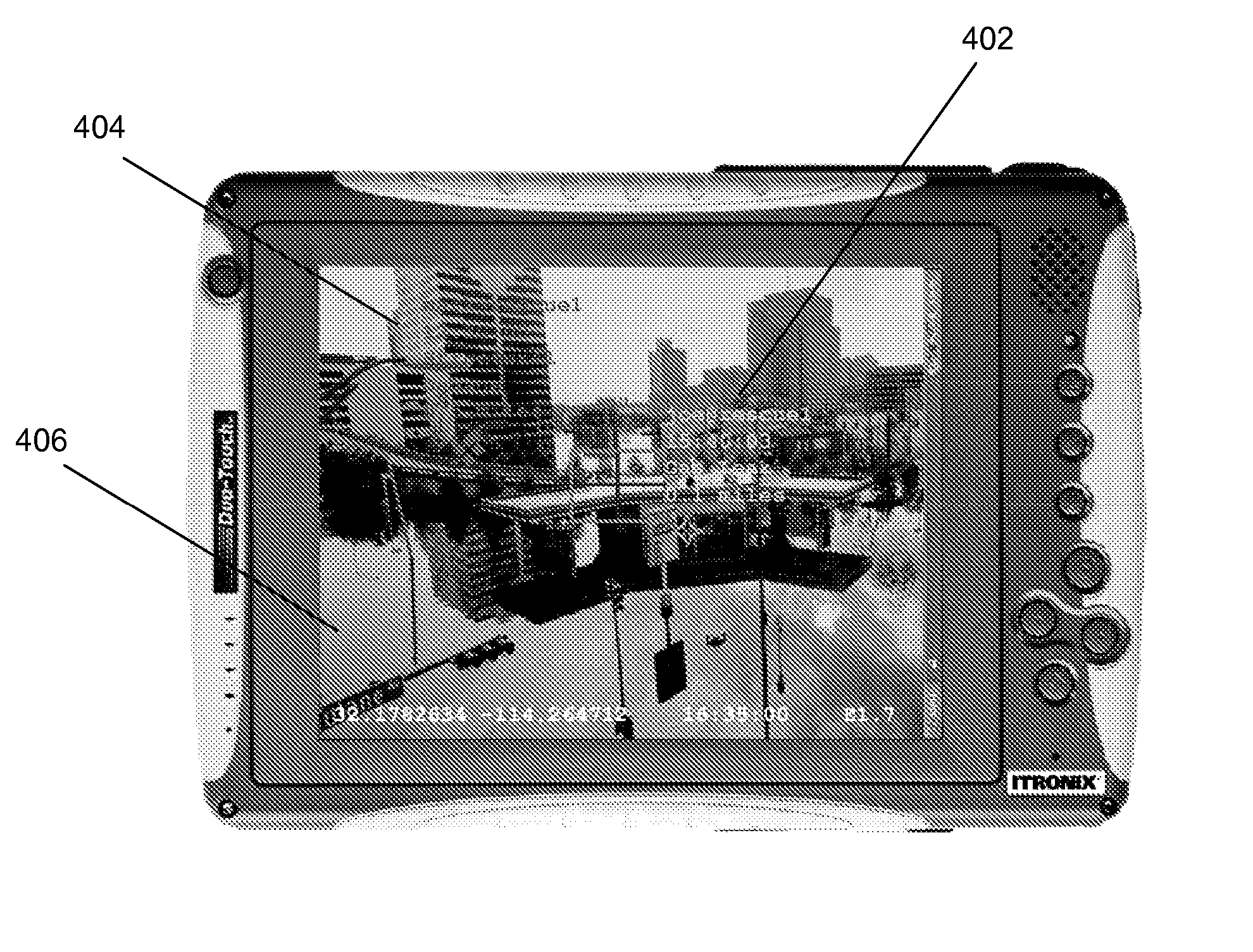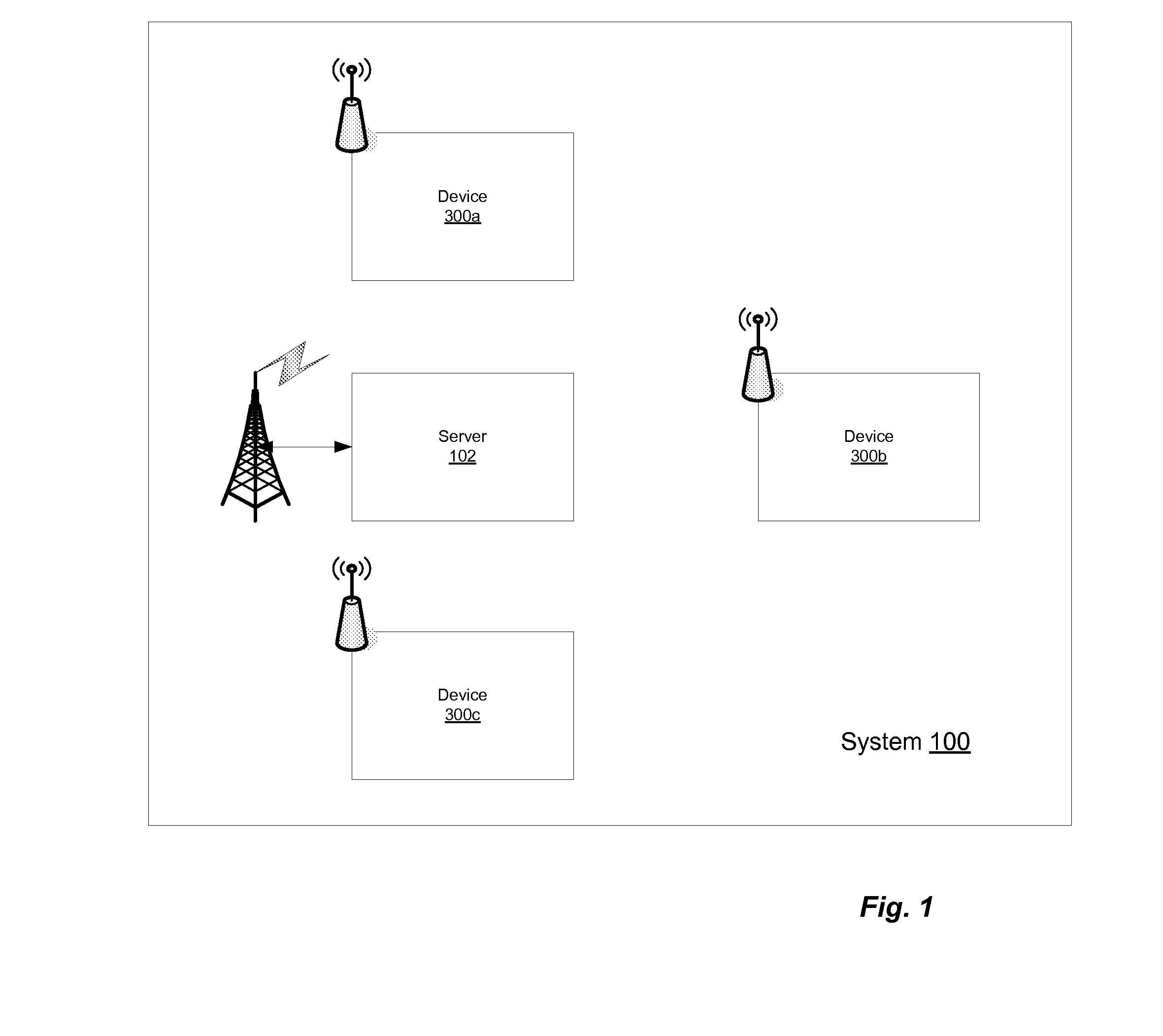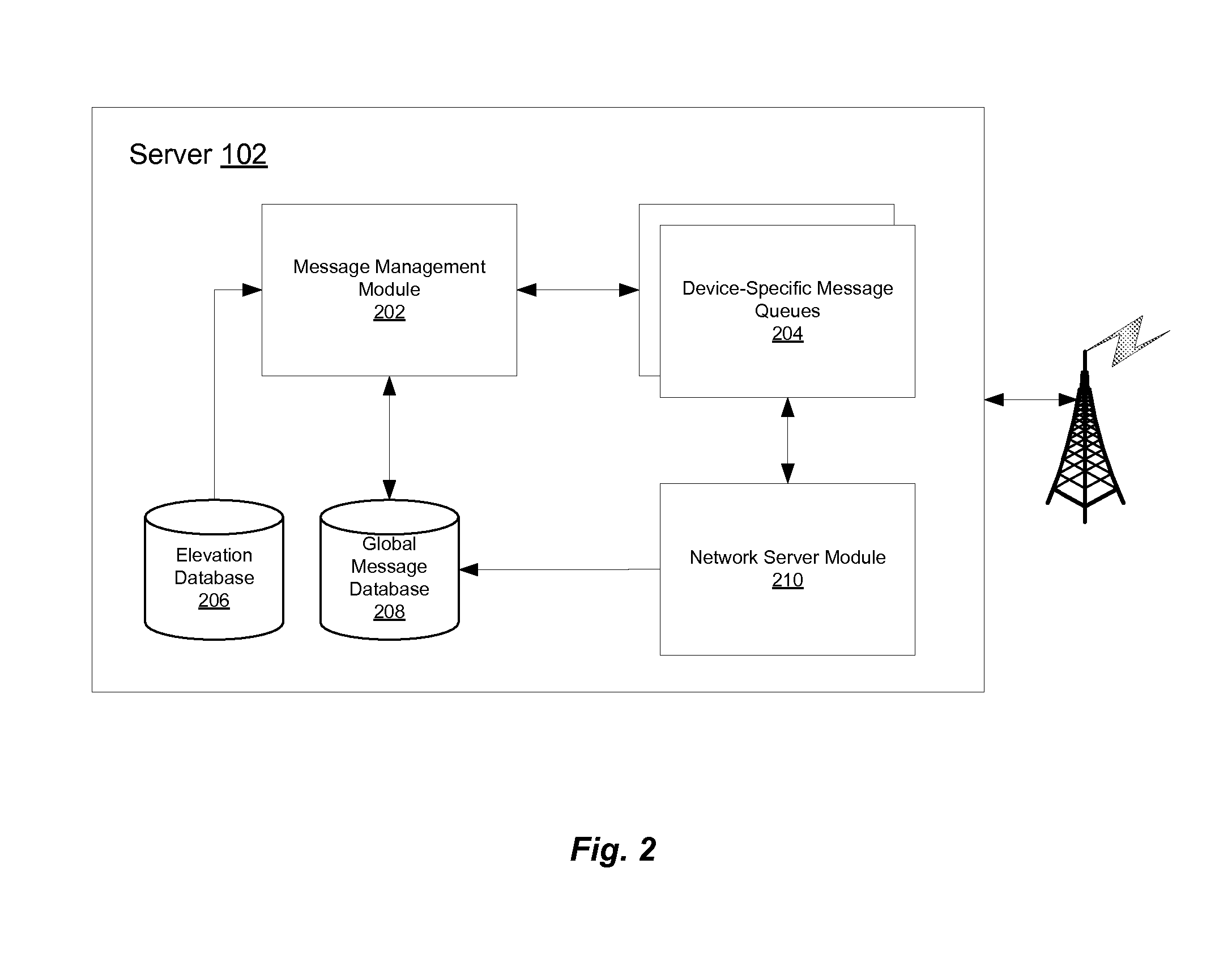Location Based Wireless Collaborative Environment With A Visual User Interface
a collaborative environment and wireless technology, applied in the field of computer graphics and networked wireless communication, can solve the problems of inability to integrate with what is happening on the field and where, tools that work exceptionally well in an office environment, and ineffectiveness of the task at hand,
- Summary
- Abstract
- Description
- Claims
- Application Information
AI Technical Summary
Benefits of technology
Problems solved by technology
Method used
Image
Examples
Embodiment Construction
[0027]FIG. 1 illustrates a system 100 for providing wireless collaboration in accordance with an embodiment of the present invention. System 100 includes a server 102 and wireless client devices 300a, 300b, 300c. As illustrated, server 102 is in contact with client devices 300a, 300b and 300c via a wireless interface, for example a cellular network. Multiple client devices 300a, 300b, and 300c are illustrated to indicate that server 102 may be in contact with a plurality of client devices. For clarity of description, we refer generally to client device 300, though any number of client devices may be in operation and communication with server 102. The operation of and interaction between server 102 and client device 300 is described further below.
[0028] In one embodiment, geographically tagged messages are received and sent by client device 300 via its wireless network interface 310. Messages in one embodiment include latitude, longitude and elevation coordinates, and in one embodim...
PUM
 Login to View More
Login to View More Abstract
Description
Claims
Application Information
 Login to View More
Login to View More - R&D
- Intellectual Property
- Life Sciences
- Materials
- Tech Scout
- Unparalleled Data Quality
- Higher Quality Content
- 60% Fewer Hallucinations
Browse by: Latest US Patents, China's latest patents, Technical Efficacy Thesaurus, Application Domain, Technology Topic, Popular Technical Reports.
© 2025 PatSnap. All rights reserved.Legal|Privacy policy|Modern Slavery Act Transparency Statement|Sitemap|About US| Contact US: help@patsnap.com



